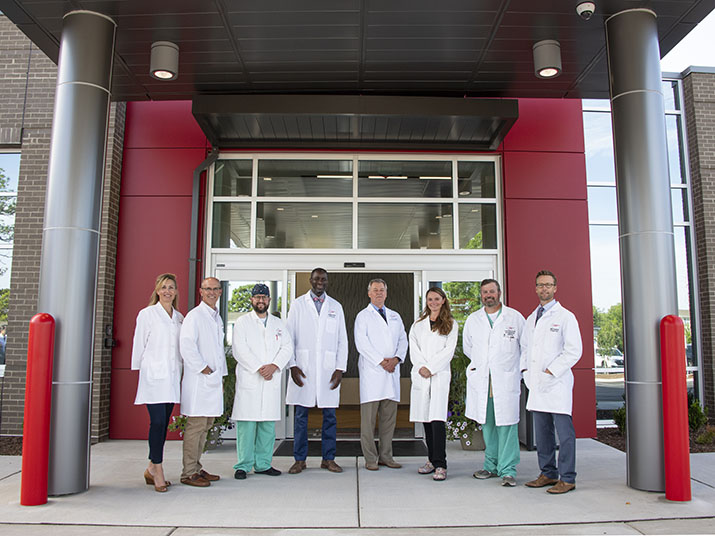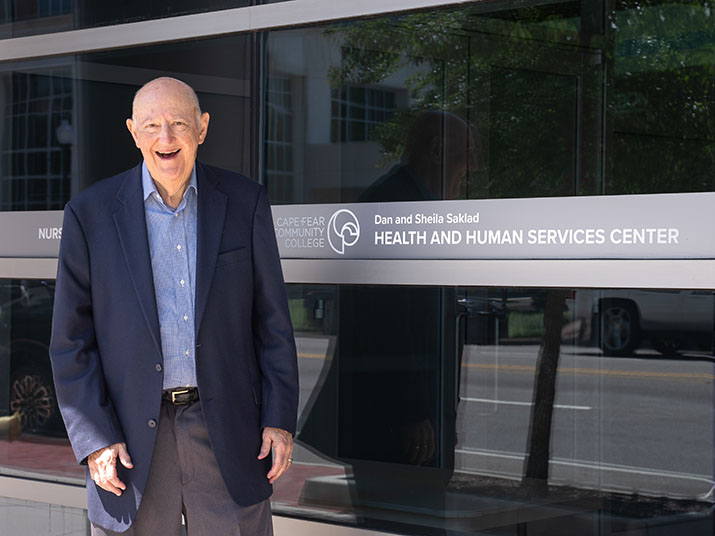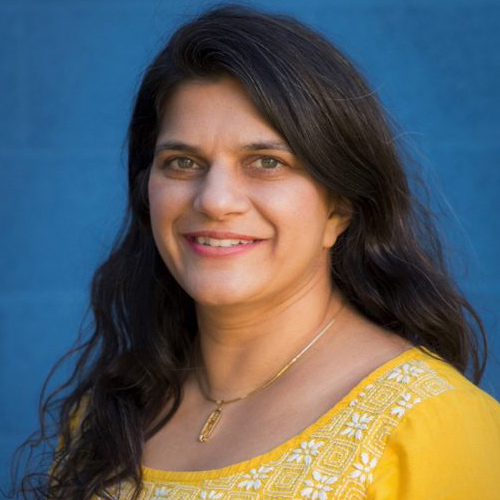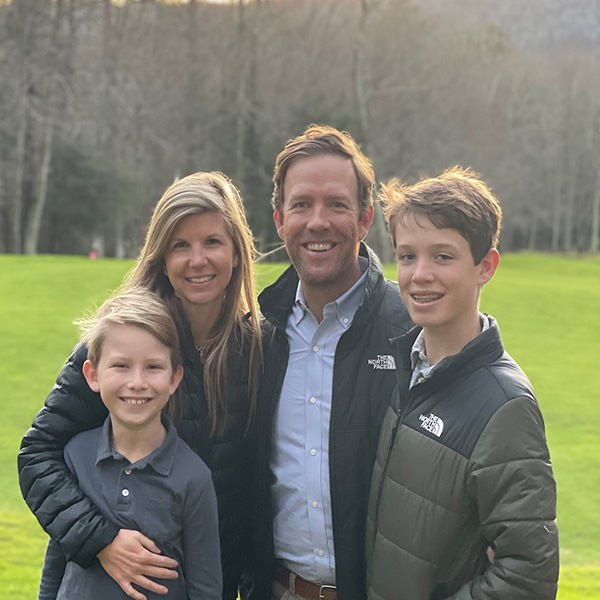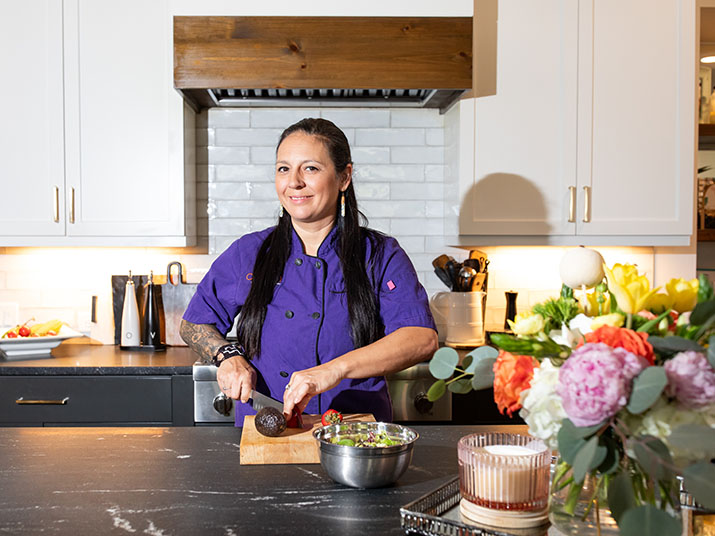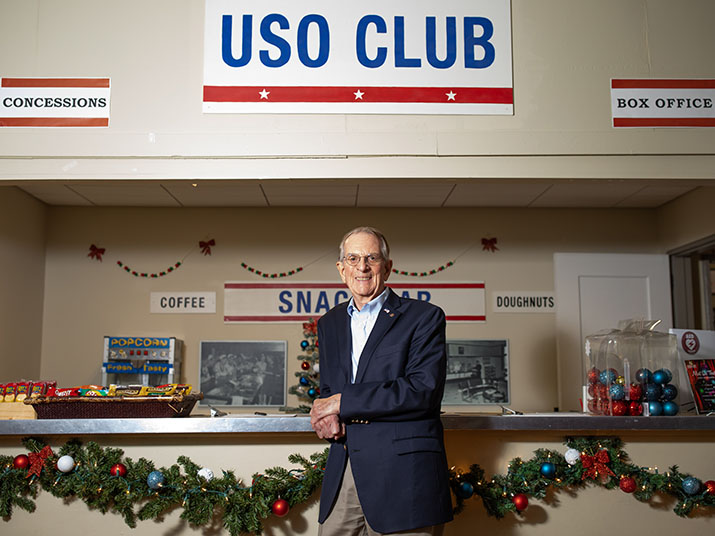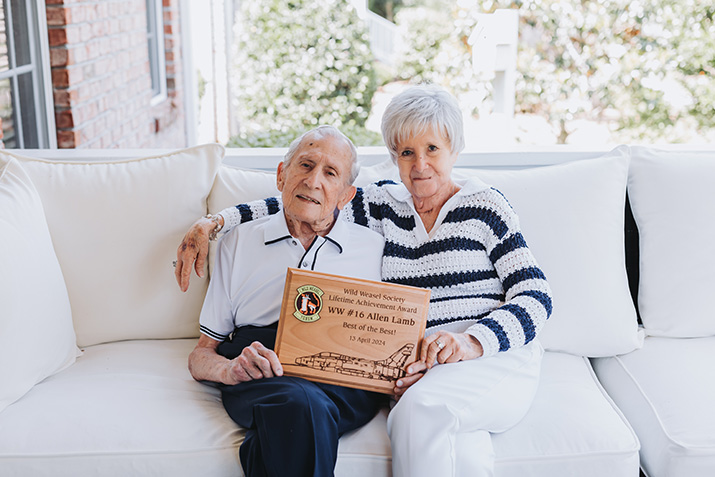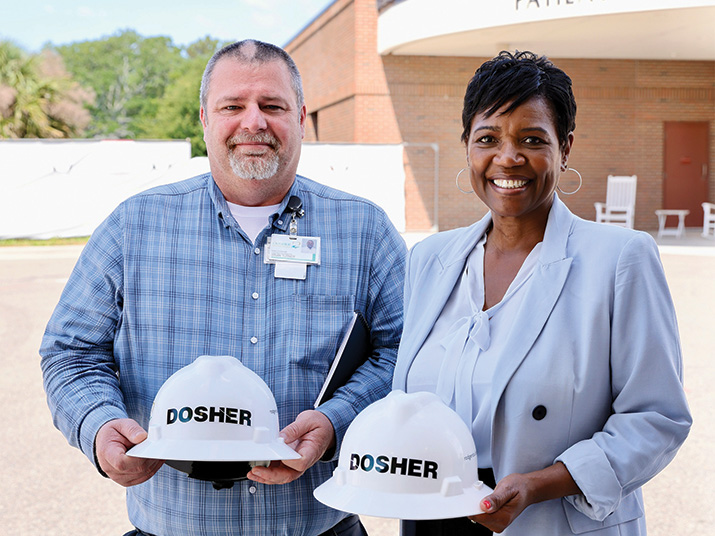The Novant, NHRMC hospital landscape
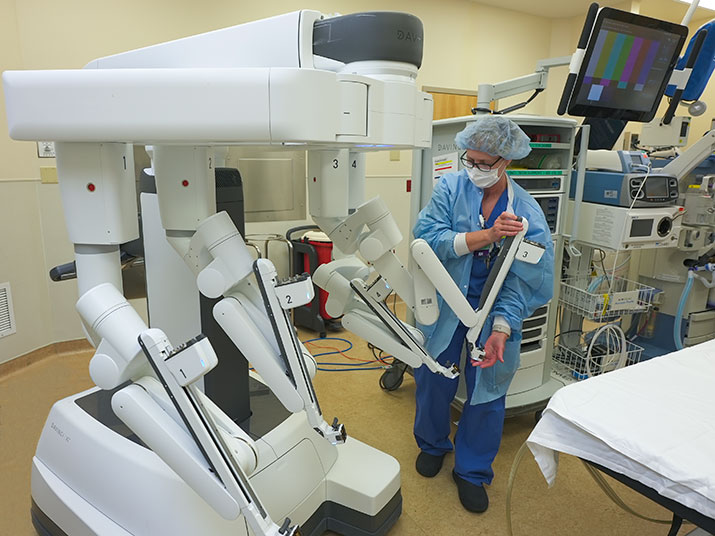
Clinical coordinator Lynn Brinson stands with the da Vinci Xi robotic surgical system in an operating room at Novant Health Scotts Hill Outpatient Surgery Center. (Photo courtesy of Novant Health NHRMC)
In the wake of the first anniversary of their merger, Novant Health and New Hanover Regional Medical Center are accelerating plans to build more facilities, deepen medical specialties and serve more patients.
Following the Feb. 1, 2021, merger of New Hanover County-owned NHRMC with Novant, the two health care systems began integrating staff, policies and resources – a formidable task in itself – as COVID-19 tested the combined organization’s capacity to handle record waves of hospitalizations.
At the same time, a new coastal market management team was put in place that cross-pollinated leadership at NHRMC and Brunswick Medical Center, which was already part of Novant Health prior to its purchase of NHRMC.
Now, with an integrated team that proved its mettle throughout the pandemic, the approximately 8,400 individuals working in Novant Health’s coastal region as of the beginning of the year have their sights set further down the road.
When NHRMC’s sale took effect last year, Novant Health became obligated to execute a host of hospital-specific and community-related promises made as part of the purchase agreement.
Among the key commitments are a total of $3.1 billion to fund major facilities and both strategic and routine capital needs; $300 million for a county revenue stabilization fund; and $1.25 billion in sales proceeds as base funding for a new nonprofit, the New Hanover Community Endowment, which is expected to release $50 million or more in grants annually for education, health and social equity, public safety and community development.

“You had Brunswick and then you had NHRMC, and we did things separately and almost in competition. And now this has given us an opportunity to take a step back and say, okay, now that we’re one, how do we provide access to the entire region?” said Laurie Whalin, who served as president and COO of Novant Health Brunswick Medical Center over the past year before being named COO of Wilmington-based Novant Health NHRMC in February.
“Not just Pender, Brunswick and New Hanover County, but all seven counties” as far north as Onslow and as far west as Columbus, she said.
Retaining and recruiting the right staff will be critical in delivering quality services to a growing area population, many of whom need specialized care in disciplines such as cardiology, oncology, neurology and pediatrics.
As part of its acquisition, Novant pledged to retain all of the Wilmington system’s employees for a minimum of two years at their then-current salaries, titles and responsibilities. Hourly workers at NHRMC were transitioned to Novant’s higher $15 minimum.
As the pandemic continued to take its toll on employees and their families and as the first anniversary of the merger neared, Novant announced a one-time, $40 million investment in team members across its three-state system of North Carolina, South Carolina and Georgia. Full-time employees at the assistant director level and below were given an extra week of paid time off or its cash equivalent. Part-time workers received an additional 24 hours of PTO or cash.
While the bonus came on the heels of some staff departures and concerns across the health care industry over nursing shortages, it also was a reflection of the need to retain and hire even more staff devoted to value-based performance.
Over the past year, 49 new providers were recruited to the coastal region’s physician group alone, Whalin said.
“One, the volume has increased, so we need more staff,” she said. “But two, we’ve lost staff. We’ve probably landed in about the same place (8,400 employees) … but nursing is our No. 1 top focus.”
Shelbourn Stevens, formerly president of Novant Health Brunswick Medical Center and now president of Novant Health- NHRMC as well as its broader coastal region, said quality staffing is essential as the system develops a master facility plan that is central to meeting the demand for services.
“Where are there gaps? Where are we out of space? What could we do differently, what could look different, how do we offer those services? How do we expand some specialty clinics for the region?” Stevens said. “People just keep moving here and moving here, so we’re going to have to continue that physician recruitment and be able to provide those services in those communities. So, we’ll have lots more projects coming up on the horizon.”
With both providers and patients having gotten used to virtual care during the pandemic, there is increased interest by Novant in the health care system becoming more deeply involved in home-based care.
Last September, Novant launched COVID Care at Home for patients who had been hospitalized with COVID-19 and who could transition to at-home monitoring using virtual care, along with office visits or hospital readmission if required.
NHRMC had launched a similar program in April 2020, prior to the purchase.
“We used that as a mini-model,” Whalin said. “We see (using) it for a lot of simple conditions like pneumonia, cellulitis, things that can be treated in the home that just need minimal therapy such as antibiotics, but some monitoring and nurse care.
“We do see us offering a lot of those services ourselves, from physician staff as well as nursing” while utilizing partners such as physical therapists and mobile X-ray services, she said.
Meantime, Novant Health launched a new business division in March that will serve as an incubator for technological advancements that could enhance clinical care for a variety of patients.
The new division, Novant Health Enterprises, is able to invest in, or acquire, third-party enterprises that pioneer breakthrough technology that could help staff deliver a higher level of care.
Prior to NHE’s formation, Novant partnered with the firm Viz.ai to introduce artificial intelligence that can analyze images of suspected large-vessel occlusion strokes. The technology enables stroke specialists to save “critical minutes, even hours,” a company statement said. It is already in use in Novant’s coastal market.
“I’ve lived in this region for 15 years,” Stevens said, “and it has been astounding to see this positive level of investment and health care progress in just one year.”



